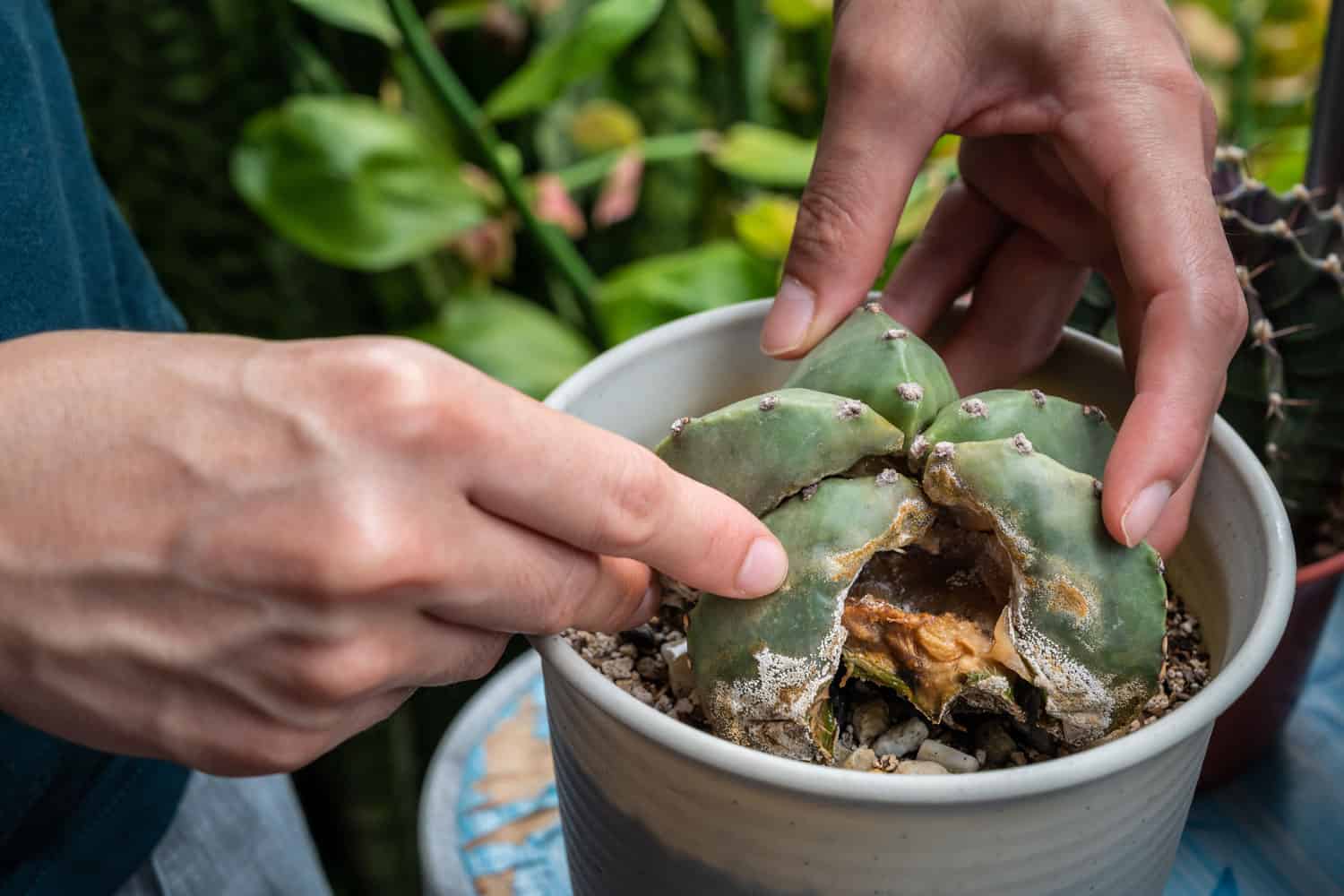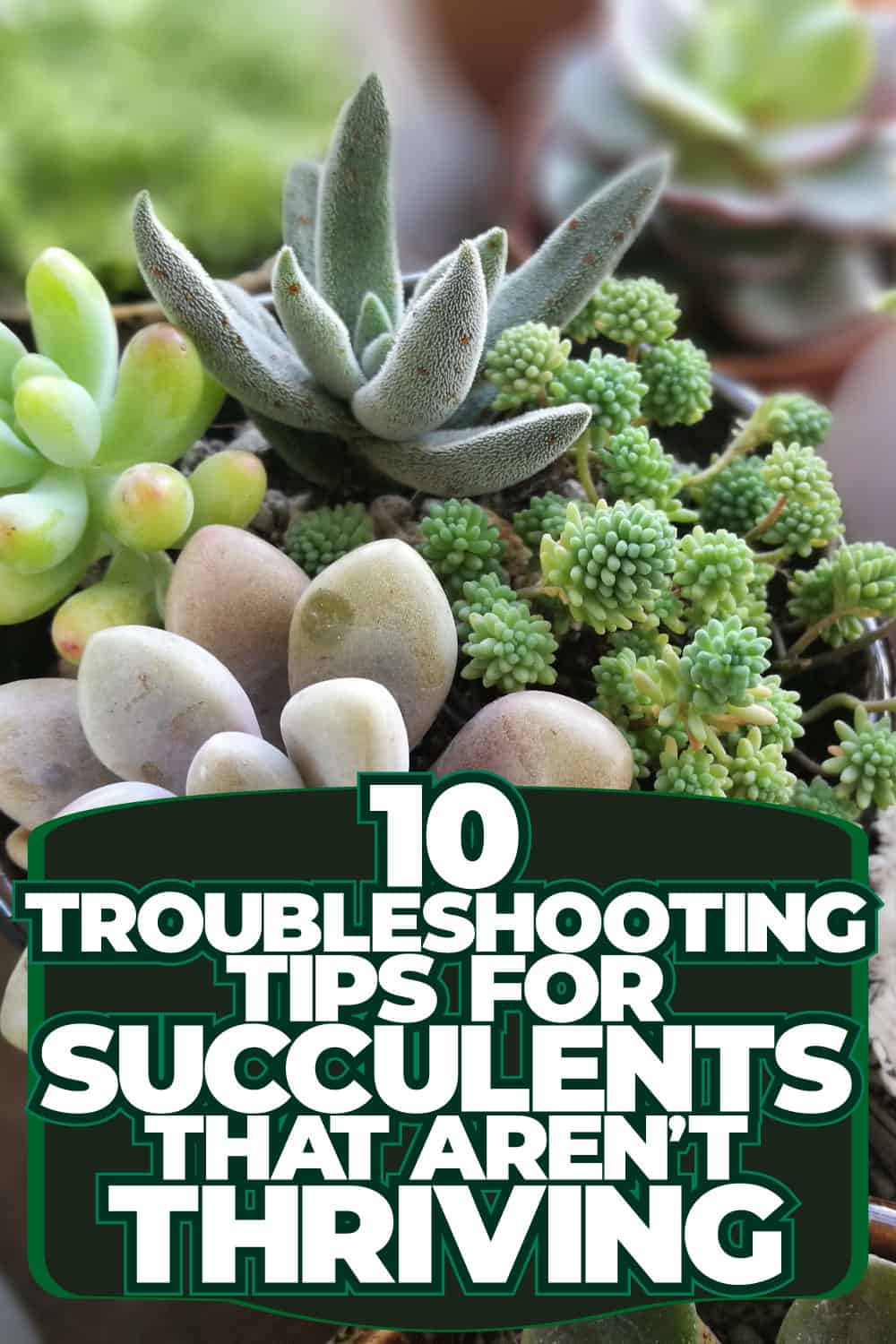Have you noticed your succulents looking a little lackluster lately? Are you spotting some brown spots, wilting leaves, or a general lack of growth?
You're not alone. Some succulent owners do struggle to keep their plants thriving.

Fortunately, there are some simple troubleshooting tips you can follow to help your succulents get back on track.
Troubleshooting Tips for Succulents That Aren't Thriving
If your succulents aren't looking as healthy as they should be, here are some troubleshooting tips you can take before it's too late.
Tip #1: Find the Right Water Balance
Finding the right watering balance is key to your succulents' health. Too much water can cause yellow leaves and root rot while not giving enough leads to wilting.
The rule of thumb is to water deeply when the soil is completely dry. This might mean every 2 to 3 weeks, but always adjust based on light, temperature, and the season.
For example, succulents go into a dormant phase in winter and need less water. So, remember to adjust your watering accordingly.
Tip #2: Keep an Eye on the Leaves
The leaves of your succulents are great at telling you how they're doing.
Look for leaves that are too soft or mushy (which means too much water) or wrinkled (which means not enough water).
What you want are leaves that are firm and happy.
By checking the leaves regularly, you can spot any issues early and fix them before they worsen. This way, your succulents stay looking their best.
Tip #3: Give Them Room to Breathe
Succulents need their space to grow. Overcrowding can lead to poor air circulation and increased humidity, creating an environment ripe for pests and diseases.
When they start to outgrow their space, it's time to repot or space them out. This gives them room to flourish and prevents the spread of any issues from one plant to another.
Tip #4: Set Up the Right Conditions
For succulents to thrive, they need a warm, dry setting with plenty of fresh air moving around.
Place your succulent where it can bask in lots of natural sunlight, but be careful to keep it away from drafty areas or spots with extreme temperature changes.
This way, you'll provide the perfect habitat for your succulents to thrive and grow.
Also, the amount of sunlight a succulent needs can vary based on the type, so research your specific succulent, too!
Are you gardening with succulents in Zone 9? Don't miss our specific tips and tricks in gardening with succulents for your zone.
Tip #5: Choose the Right Soil and Potting Mix
Succulents require well-draining soil to thrive. Using the wrong soil or potting mix can lead to issues like root rot and waterlogged soil.
Choose a soil mix that is specifically designed for succulents, like a succulent or cactus potting mix.
These typically contain a combination of soil, coarse sand, and perlite or pumice, which help to ensure excess water drains quickly.
If a commercial succulent mix is unavailable, you can create your own by mixing regular potting soil with equal parts of coarse sand and perlite or pumice.
Tip #6: Address Nutrient Deficiencies
Just like how we discussed using the right soil, it's also super important to ensure your succulent gets the right amount of food.
However, keep in mind that succulents don't need as much fertilizer as other plants. In fact, too much fertilizer can be harmful to them.
If you see the leaves turning yellow or the plant isn't growing much, it might be a sign of a nutrient deficiency.
Instead of frequent fertilization, it's often better to use a succulent-specific fertilizer (like the ones mentioned in tip #5) once a year.
Alongside, adding some compost to the soil can offer a natural, gentle supply of nutrients.
Tip #7: Follow a Gradual Transition
Notice brown or tan spots? This could be sunburn, especially if your succulent has moved from a dim to a very bright spot recently.
While succulents enjoy light, sudden changes can be stressful. Gradual transition to brighter light is key.
Start by placing it in indirect sunlight and slowly increasing its direct sunlight exposure over several days or weeks.
Tip #8: Prune and Maintain Regularly
While succulents don't require much pruning, keeping up with basic maintenance is still a good idea.
This means regularly removing any dead leaves and keeping an eye out for any bugs or signs of disease.
When you do prune, do it gently to help your succulent grow healthy. And if you spot any pests or problems, take care of them quickly.
Tip #9: Get Rid of Pests and Diseases
Speaking of pests, watch out for mealybugs on your succulents. These bugs look like tiny white cotton spots on the leaves and stems.
If you see them, isolate infested plants, rinse them, and use treatments like rubbing alcohol or Neem oil sparingly.
See this Neem Oil Spray on Amazon.
If you're unsure how to use pest oil on your succulents, learn about the dos and don'ts of using pest oil by reading this post.
Apart from this, your succulent can also get diseases. Particularly, many cacti and succulents are prone to root-knot nematodes.
If infected, the roots will show small galls, which you can spot on clean, washed roots. To prevent this, it's a good idea to sterilize the soil before potting.
Tip #10: Manage Stunted Growth
Stunted growth in succulents can often be a sign of inadequate environmental conditions.
To combat this, let's go back to our earlier tips about soil and water. Make sure your succulent is in a well-draining soil and isn't over or under-watered.
Also, check if it's getting enough sunlight – not too little, not too much. And a touch of balanced fertilizer can give it the extra nutrients it needs.
If the plant is root-bound or the soil is degraded, repot it into fresh, suitable soil to encourage healthy growth.
With these adjustments, your succulent should start to perk up and grow better.
Endnotes on Ensuring a Thriving Succulent
There you have it! A complete list of troubleshooting tips to help your succulents look their best.
From balancing their water needs to creating the ideal growing environment, each tip helps your succulents stay healthy and happy.
Watch their leaves, give them enough room, and use the right soil. Be careful when changing their environment, and keep an eye out for any pests or diseases.
And if your succulent isn't growing as it should, a bit more sunlight and some proper nutrition might do the trick!


